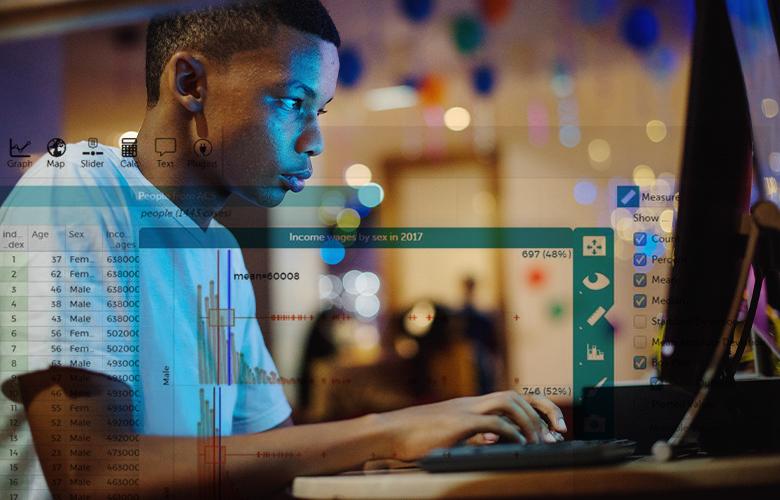
Each day, I wake to news alerts on my phone, jolted by snippets of data—often dire—about the state of the world. Numbers of coronavirus infections. The rise of jobless claims. The disproportionate impacts of policing policies on historically marginalized groups. Polls that tie political parties to differing perceptions of social, economic, and political realities.
In a world drowning in data, how can individuals discern what is true and what is false? How can we agree on a common set of facts to forge a common purpose, unified action, and a more just society?
I believe two concerted efforts can make a difference.
First, let’s help people learn to make sense of data. A range of quantitative skills and mindsets are needed to summarize and draw valid conclusions from any sizable body of data. Tools to support these skills and mindsets have historically come from the statistics field. The American Statistics Association recently updated its guidelines for supporting students’ abilities to investigate data in pre-K–12 education. The president of the National Council of Teachers of Mathematics has called for heightened attention to the learning of statistical thinking and data analysis. We must heed this call within mathematics and other subjects, starting in the early grades.
Second, let’s strive for teaching that promotes social justice. According to the work of Eric Gutstein,1 teaching for social justice has three key components:
- Building students’ awareness of social and political inequalities
- Promoting students’ sense that they can take action to create social change
- Strengthening students’ social and cultural identities
I’ve been working with colleagues to combine and support both efforts. Our project, Strengthening Data Literacy across the Curriculum (SDLC), has been developing high school statistics curriculum materials to help students explore social justice issues. With our modules, students learn to use large-scale data to investigate growing income inequality and controversial claims about immigrants in the United States.
Our early research shows signs of strong engagement and statistical learning among students. Yet obstacles remain. The interdisciplinary nature of these efforts can be daunting for teachers. And school schedules do not always support the time that multi-faceted learning requires.
But news alerts on my phone do not stop. Although the headlines may stun, I get out of bed. Nothing feels more important than helping young people forge world views through sound reasoning with data, and providing them with skills and understanding to shape a more just society.
| Josephine Louie, senior research scientist, is the principal investigator of EDC’s SDLC and WeatherX projects. She leads research for a project that is developing a pathway to data science careers in Massachusetts high schools. |
1 Gutstein, E. (2003). Teaching and learning mathematics for social justice in an urban, Latino school. Journal for Research in Mathematics Education, 34(1), 37–73.

Add new comment